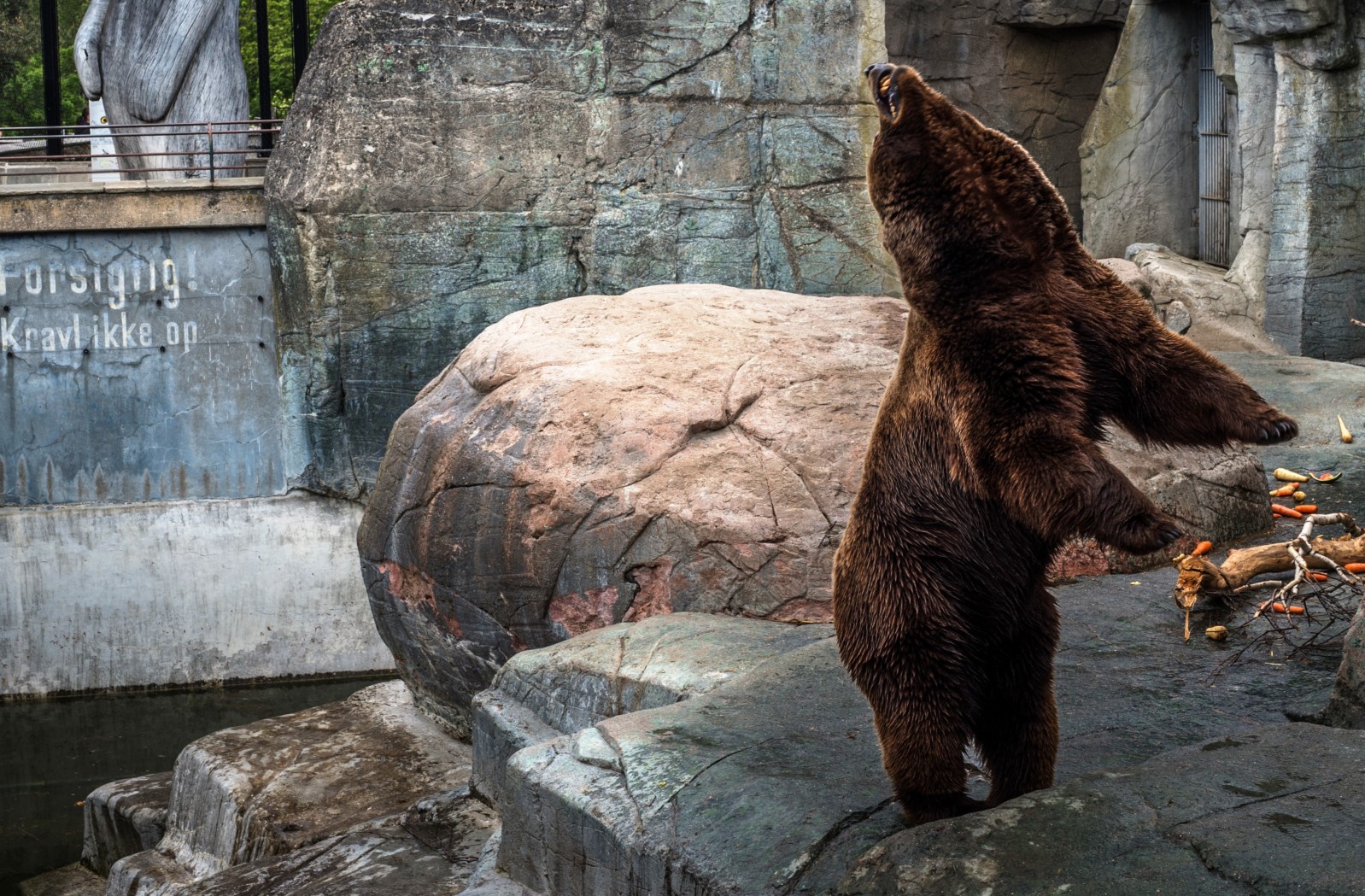Remembering captive animals on World Mental Health Day
10 October 2022
REMEMBERING CAPTIVE ANIMALS ON WORLD MENTAL HEALTH DAY
This ‘World Mental Health Day’, Born Free’s Captivity Campaigns Information Coordinator, Sarah Jefferson, considers the psychological effects that captivity can have on wild animals.

2022 marks the 30th anniversary of Born Free’s Co-Founder, Bill Travers, first coining the term ‘zoochosis’ to describe obsessive, repetitive behaviours seen in captive wild animals. He described animals behaving abnormally as ‘zoochotic’, pointing out that those behaviours may be evidence that captivity induces neurosis. The terms are now widely recognised and are used in an increasing number of journals and publications.

Sarah Jefferson
Zoochotic behaviours in captive wild animals frequently manifest as repetitive ‘stereotypic’ actions with no apparent function, such as pacing, circling (often causing noticeable, well-worn paths or footprints in the ground), swaying, weaving, head-bobbing, neck-twisting, bar-biting, feather-plucking, over-grooming or excessive licking and chewing (often causing self mutilation in the worse cases). Other abnormal, zoochotic behaviours include coprophilia and coprophagia – the playing with and eating of faeces (in species that do not naturally do this), as well as vomiting and regurgitation.
Bill stated in 1993 that in every one of over 100 zoos he visited in Europe, North America, and Asia, when gathering evidence for the Zoochotic Report film, he witnessed animals displaying some sort of abnormal behaviour. Although the conditions in many zoos may have improved over the years, these behaviours can still be observed in captive wild animals across the world today. Born Free’s visits to zoos, as well as the Red Flag reports we receive from concerned zoo visitors, have identified and recorded many animals displaying some heart-wrenching behaviours. If observed for more than a passing glance, zoochotic animals can be found at even the most well-known or highly regarded zoos.
In my 16 years working at Born Free, I have witnessed these behaviours first-hand and catalogued a massive amount of captive animal video footage held in our archive of evidence. Zoochotic behaviours have been recorded in a vast range of species – most notably in elephants, big cats, giraffes, bears, great apes, and parrots, but also in many other animals such as squirrels, raccoons, pheasants, otters, and meerkats. Not many captive wild animals seem to be immune to zoochosis.
But what actually causes these behaviours and what do they mean?
Unless a real-life Dr Dolittle comes to light, we will never know with absolute certainty what a captive animal is thinking or feeling or why they act the way they do. However, it’s widely recognised that animals have evolved over millennia and their unique physical, physiological, and behavioural traits are specifically adapted to their natural habitats. If captive environments do not cater for the species-specific needs of the animals they contain, or the animals face unnatural stress or frustration, there can be a deterioration in both their physical and mental health, leading to the development of physical disease or abnormal, zoochotic behaviours.
Some of the behaviours displayed by bored and frustrated animals may have their basis in activities that occur naturally in the wild, but in the confines of captivity, they may become compulsive and unnatural, and can be more readily identified because they often become simplified, repetitive, and over-represented. It is evident that many animals still suffer as a result of being held in artificial environments with little stimulation or enrichment, and no escape from the public gaze.
In the wild, animals’ lives are naturally enriched by activities including foraging, hunting, and looking for food; defending their territories; finding mates (of their own choosing); raising their young; socialising with their families; walking, running, or swimming for miles; and much more. Take the opportunity for these activities away and captive animals have little to occupy their time or their minds.
Many zoos claim that they conduct valuable research by studying captive animal behaviour and individual animals’ responses to environmental enrichment (items, toys or furnishings designed to stimulate an animal’s mind). Such studies frequently focus on problems created by captivity and how they affect animal welfare – research that is only needed due to the existence of zoos and the many problems they create.
If you witness zoochotic behaviour, please speak out, ask questions, and report it via our Raise the Red Flag online platform.
ZOOCHOSIS CAPTIVE ANIMALS RAISE THE RED FLAG
Images © Britta Jaschinski / © Born Free
